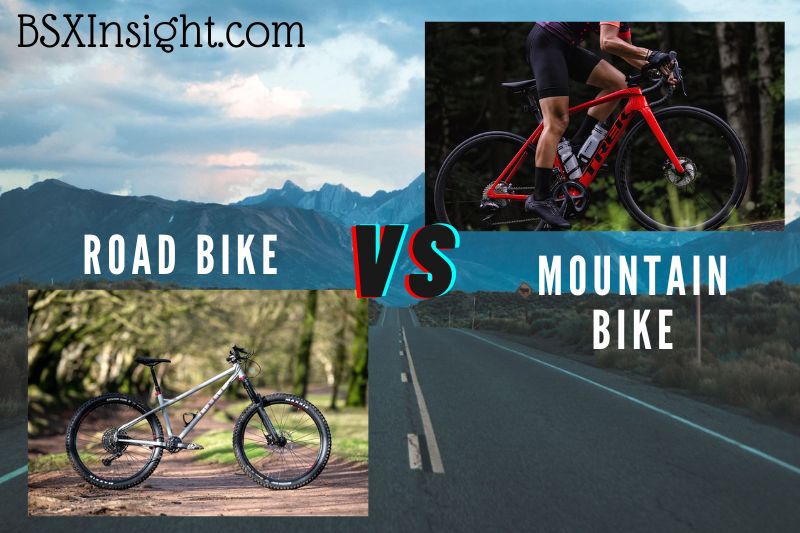There are a few key differences between a road bike vs mountain bike. Road bikes are designed for speed and have thinner tires, while mountain bikes are designed for more rugged terrain and have thicker tires. Mountain bikes also usually have suspension to absorb shock from bumps in the trail, while road bikes do not.
Both types of bikes have their own strengths and weaknesses, so it’s important to choose the right one for the type of riding you’ll be doing. Keep reading our post for more useful information about them with BSXInsight.
What is a Road Bike?

Road bikes have a history and pedigree of being used for racing, but they are primarily designed for confronting a daily commute within an urban environment.
With a lightweight construction and smooth, thin tires that allow you to tear through paved surfaces easily, they are designed for speed.
They are so well-known for their speed that disc-brake versions have just started to appear. The majority of the time, recreational riders still utilize them. Additionally, they are available in a wide range of variants, including Aero, Ultralight, Endurance, Touring, and All-Road.
Anyone looking to rack up miles, travel large distances, or participate in group riding sessions where everyone helps each other out will do well on a road bike.
It will help to make your experience safer and better, though, if you are aware of their high price, the potential for flat tires, and other annoying vehicles on the road.
Pros

Road bikes are lighter
A high-end road bike typically weighs 8 kg or 18 lbs. Racing bicycles for professionals only weigh 6.8 kg or about 15 lbs. The UCI (Union Cycliste Internationale) has set this as the minimum bike weight for competitive road cycling.
A mountain bike weighs roughly 12.7 kg, or 28 lbs, in comparison. As you can see, a comparable mountain bike will weigh 10–12 lbs more than a lightweight road cycle that weighs 4.5–5.5 kg.
Lightweightness is a top priority for road bikes. They have no suspension system, lightweight frames, and forks built of aluminum or carbon fiber, low-spoke wheels with small rims and tires, and low spoke counts.
Drivetrain parts for road bikes typically weigh less as well. With a lighter bike, you can go farther and more quickly. Moving less mass around requires less energy. It is also simpler to handle and move the lightweight bike.
Road bikes are more aerodynamic.

Aerodynamics significantly affects your riding speed and energy expenditure. In actuality, “as much as 90% of the resistance a rider has to overcome is the aerodynamic drag,” claims this fascinating essay on bicycle aerodynamics. The more aerodynamics matter, the faster you cycle.
Aerodynamics plays a key role in the design of road motorcycles. You are positioned in a forceful, aerodynamic riding stance. You can squat down while keeping your elbows in with the help of the small drop bars. Your speed and energy efficiency rise due to the huge reduction in drag.
Additionally, the wheels of road bikes have fewer spokes, and the tires are narrower. This lessens drag even more. Because there is less wind resistance to overcome, you don’t need to pedal as vigorously.
When riding into a headwind, going down a slope, or just trying to ride quickly, aerodynamic efficiency is useful. You can keep your average speed higher while using less energy. Check out this scholarly study on the evolution of bicycle aerodynamics for more technical information.
Road bicycles have several hand positions.
Drop bars can be found on most road bikes. These provide three different hand positions: in the drops, on the brake hoods, and on top of the bars. The bar tops and hoods are cozy for cruising. You have plenty of leverage for climbing by riding on the hoods.
You are in the ideal aerodynamic position for descending slopes and riding into headwinds while you are riding in the drops. Other areas of the bars can also be gripped because grip tape has been applied to every surface of them. There is no limit to grip positions.
Like bicycle tourists, long-distance cyclists benefit from having various grip positions. A different group of muscles is used for each grip position. By changing your grip, you can release tension in various areas of your hands and wrists and relieve pressure on the nerves in your wrists.
This enables you to ride for extended periods of time without getting tired of having numb hands. This significantly raises comfort. Of course, drop bars are not standard on all road bikes. Some feature horizontal bars.
Road Bikes are better for climbing hills.

You can acquire a strong climbing position thanks to the geometry of the road bike frame and the drop bars. especially when standing.
As you cycle, you may lean the bike back and forth with the help of the drop bars. The bike should be leaned away from the foot that is producing power during the downstroke. This makes it easier for you to shift your weight from one foot to the other. You are assisting your pedaling by doing by engaging your upper body.
Climbing is also made simpler by the road bike frame shape. You can slightly lean your body forward when pedaling in the riding posture. You can exert more force while climbing as a result.
Because you are pushing less mass up the hill, climbing is also significantly easier on road bikes because of their reduced weight. A road bike may be wise if you frequently ride in hilly or mountainous terrain because it will make ascents much simpler.
Road bikes are more efficient than mountain bikes.
This is due to several factors. First, road tires have less rolling resistance because they are tougher and more narrow. Less of the tire hit the ground since they don’t deform as much at the contact patch. Fewer friction results with road tires.
Aerodynamics is arguably the most important aspect in determining efficiency. Due to the riding posture, road bikes have a large aerodynamic advantage over mountain bikes. Because of the geometry of the frame and the handlebars, you can squat down to lessen drag. In this manner, the effort required to pedal against wind resistance is reduced.
Additionally, road bikes are far lighter than mountain bikes. Moving less weight around uses less energy. Road bikes don’t have bulky, ineffective suspension systems that waste energy when pedaling.
Also, shifting on road bikes doesn’t interfere much with your cadence. The greater proximity of the gear ratios explains this. After a shift, recovering your cadence doesn’t need as much effort. You can travel further on a bike with greater efficiency without becoming tired. You’ll use less energy and get there more quickly.
Road bikes require less frequent maintenance.

Mountain bikes typically get dirty more quickly than road cycles. They are ridden on the pavement rather than dirt and mud, which explains why this is the case. As a result, you don’t need to frequently clean and lubricate the chain. Following almost every ride, mountain bikes need to be cleaned.
Additionally, suspension parts are absent from road bikes. The fork and frame are both stiff. This eliminates a large portion of upkeep. You never have to be concerned about changing the oil, cleaning the seals, or rebuilding the suspension parts. You’ll save time and money this way.
Checking the tire pressure is one maintenance task that a road bike requires more frequently. The tires are far more sensitive to pressure fluctuations because they have a lesser capacity. You should make sure you have a reliable pump and gauge.
Road bikes are more rapid.
This is due to a few factors. Road bikes are lighter to start. With a lighter bike, you can accelerate more quickly and attain a higher top speed since you are carrying less weight. Road bikes’ frame shape also places you in the best position to increase pedaling force and speed.
Since road bikes have aggressive ride positions and drop bars, they are also more aerodynamic. You can do this to lessen drag and cut through the wind. Aerodynamics becomes more crucial as you ride faster.
As a result of the narrower spacing of the gear ratios, road bikes also shift smoothly and rapidly. Shifting causes less cadence disruption. You can gain speed and return to your ideal cadence fast by changing into a higher gear.
The high-pressure, thin tires further lessen rolling resistance. Interestingly, because they have less internal friction or hysteresis, slightly broader road tires are faster than excessively narrow tires. When in contact, they distort less. Visit this excellent article for more information on this topic.
Looks
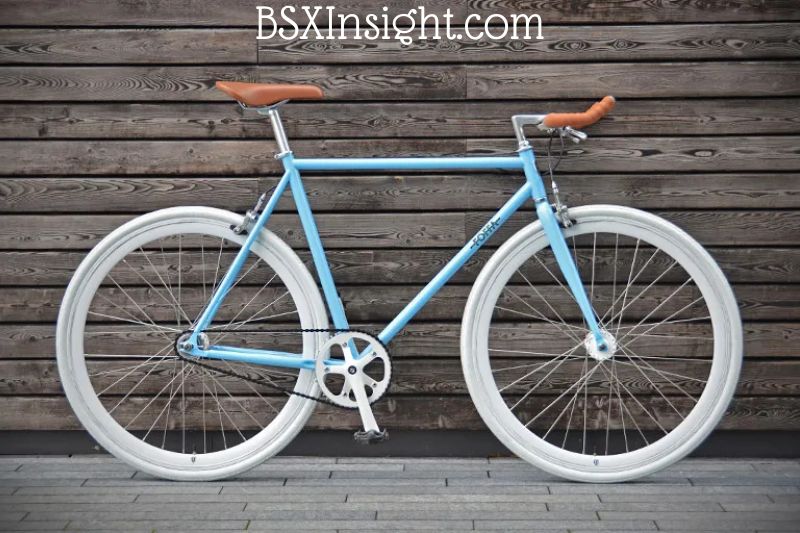
Road bikes, in my opinion, have a wonderfully timeless and recognizable appearance. A road bike comes to mind when I visualize a bicycle. The bike looks sleek and quick thanks to the drop bars, skinny tires, and sturdy frame. Of course, appearances are relative.
Road bikes can squeeze through tighter spaces.
Drop bars are normally 40–46 cm wide, while flat bars are usually 58–60 cm wide. This means that compared to mountain bikes, road bikes are about 20 cm thinner. This modest width is useful if you ride in congested traffic or on busy bike lanes in a city.
You can fit through gaps with a road bike that a mountain bike would not be able to. Your commute may go faster as a result. Really, this only helps people who live in densely populated cities.
Healthy exercise
An excellent cardio workout is road biking. Your heart rate really rises when you are cycling quickly. By adjusting your speed or cadence during the workout, you can simply regulate the difficulty level. This enables you to maintain your ideal heart-rate range.
Cycling is beneficial for weight loss as well. 400 calories can be burned every hour on average. Cycling is additionally less strenuous on your joints than jogging. You won’t damage your knees or ankles while cycling as long as your bike fits you properly. You can use a heart rate monitor and a power meter on your bike to monitor your fitness progress.
Road biking is easier to access.
Nowadays, the majority of people reside in towns or cities along paved roads. You can start cycling just outside your front door if you have a road bike. In order to ride a mountain bike, you must go to the mountains or trails outside of the city.
On a road bike, you can cover more ground more quickly.

You can ride a road bike to keep your average speed up and use less energy. Because road bikes are lighter and more aerodynamic, this is feasible. Additionally, they produce reduced rolling resistance. As a result, a road bike will allow you to travel further than a mountain bike.
Because of this, road bikes are a better option for people who travel a long distance and for bicycle tourists. If you choose a road bike over a mountain bike for your 15-mile commute, you might be able to shorten the journey by a few minutes. You might be able to travel a few hundred more miles on a road bike than you could on a mountain bike if you’re planning a month-long tour.
Cons
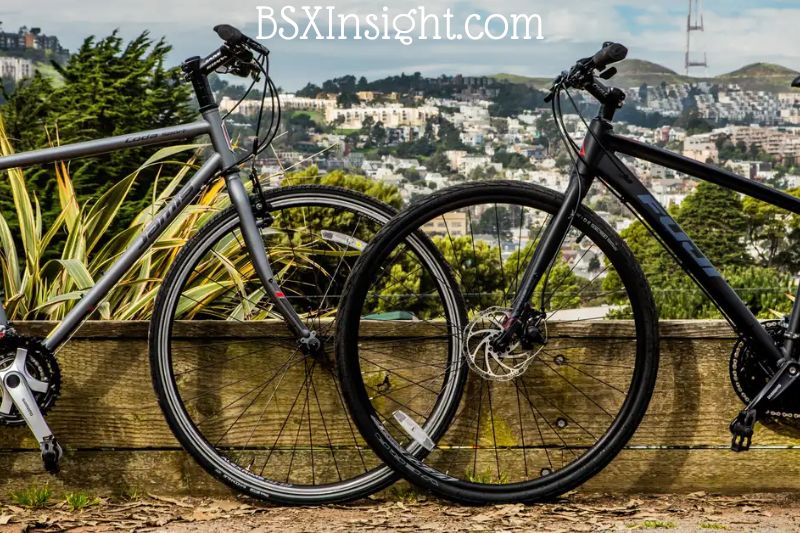
A Road Bike Limits Where You Can Ride.
You are essentially constrained to riding on paved roads when using a road bike. The inflexible frame and low-volume tires can’t overcome large bumps, pebbles, roots, and other impediments without bottoming out.
Additionally, soft surfaces pose a risk. The contact patch of the narrow tires is smaller, which causes them to sink into soft sand, mud, and snow. Friction prohibits you from riding when the tires sink into soft surfaces.
A road bike can be equipped with slightly bigger tires to increase its off-road capability. For instance, some road frames may accommodate 40–45 mm wide tires. You should have sufficient traction on these to ride on fire roads, gravel roads, and some easy mountain bike routes. With a road bike, you can’t ride a single track, downhill trails, or anything else too challenging.
This can be a problem if all of your pals ride mountain bikes while you ride a road bike. When they go off-road, you won’t be able to ride along with them.
Compared to broad mountain bike tires, narrow road tires create a less substantial compact patch with the ground. Because the tire can no longer generate as much friction with the road, traction is reduced. Road tires must be operated at greater pressures than mountain bike tires to avoid pinch flats and rim strikes.
Keeping the tire from deforming at the contact patch lessens traction. Less contact is made with the ground. The tread of on-road bike tires is often thinner than mountain bike tires. Riders typically use slicks. On flat surfaces, they provide good traction, but if the road is covered in gravel, sand, or other material, they risk losing it.
It might be challenging to ride a road bike in some conditions due to the lack of traction. You’ll need to ride your road bike with extra caution on sand patches, gravel roads, or other uneven surfaces. It can be difficult depending on slick surfaces, such as wet roads. Because your tires can slip more easily on these types of surfaces, you won’t be able to corner, halt, or accelerate as hard.
Road bikes are less durable.
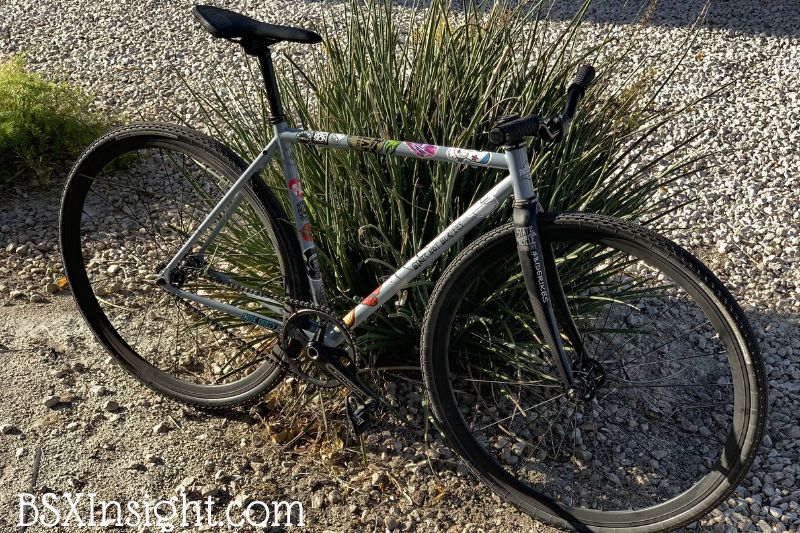
Components for road bikes are frequently a little more brittle than mountain bikes. This is true since road bikes are built with lightweight in mind. Durability is somewhat compromised. Due to the lack of stress from off-road riding, road bike parts can be less resilient.
For instance, the wheels on road bikes are often weaker than those on mountain bikes. The primary cause is that road bike wheels frequently have fewer spokes. Instead of 32 spokes, they may have 24. Because each spoke must support a greater load, broken spokes are more frequent.
The rims of road bikes are frequently both narrower and larger in diameter. The majority of road bikes have 700c wheels. Modern mountain bikes frequently have 650b wheels, which are smaller. Thinner and bigger wheels have less structural integrity. These factors may make road bike wheels a little less resilient than mountain bike wheels.
While riding over potholes or up and down curbs, you need to be a little more cautious. If you encounter a significant bump, the rim may flex or shatter more readily. The low-volume, skinny tires are also more prone to pinch flats.
Additionally, the frames and groupsets on road bikes can be a little less durable than those on mountain bikes. It’s possible that you’ll run into additional issues if you’re rough on your bike. Parts are more prone to breaking. A road bike may be more prone to sustain damage in an accident.
Road Bikes Have A Rougher Ride
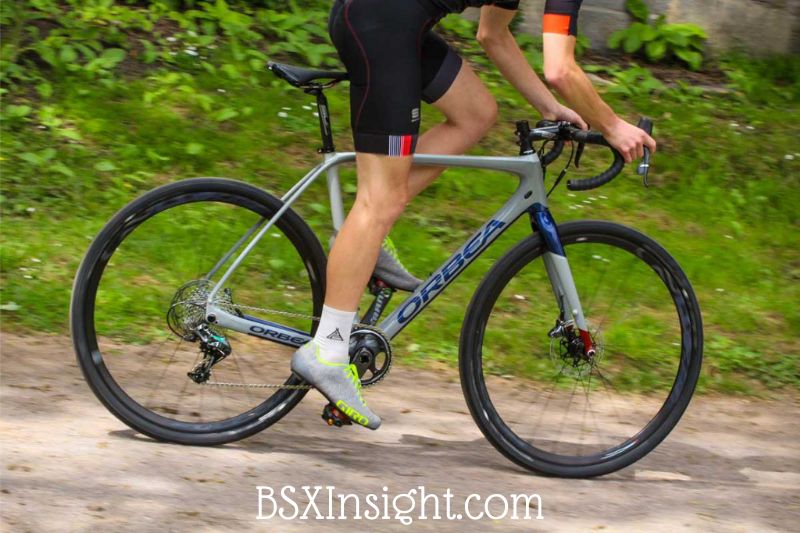
Mountain bikes ride softer than road cycles. They are not as capable of absorbing shocks and vibrations as mountain bikes. Hard tires bounce off rocks instead of deforming and absorbing the bump as you drive over them. Shocks can now enter your body through the frame, thanks to this. Riding on a rough surface will also cause you to experience additional vibrations from the road.
Additionally, road bikes lack a shock-absorbing suspension system. For the sake of efficiency, the frame and fork are totally stiff. Riding a road bike on an unforgiving, pothole-filled road will be unpleasant and punishing. For those who have joint or back issues, this could be a problem. Additionally, bumpy travel can make you tired.
The journey will feel smooth and comfortable if the local roads are in decent shape. A freshly paved pavement seems buttery smooth when riding a road bike on it. You could find riding a road bike uncomfortable if the roads are in bad condition and have lots of cracks, potholes, and debris.
Road Bicycles Are Typically More Expensive.
Road bikes start at around $1200 and are decently priced. Models for beginners start at about $600. Over $10,000 can be spent on high-end road bikes with carbon fiber frames, electronic groupsets, and all the bells and whistles. Nothing is off-limits. Similar-quality mountain bikes often cost $200–400 less on average.
Additionally, new road bike parts are frequently more expensive. For whatever reason, drop bar versions of shifters and brake levers typically cost more than flat bar versions.
Derailleurs, cassettes, and chainrings designed for the road can cost more than equivalent off-road ones. These components eventually need to be replaced as they deteriorate. Over time, this raises the cost of ownership.
Purchasing a used road bike is one option to reduce the cost. You can get a high-end vintage road bike in good shape for only a few hundred dollars.
While it might not have all the amenities of more modern bikes, it nevertheless provides outstanding performance for the money. For instance, I spent about $200 for a Centurion, Dave Scott Iron Man. I commuted to school on bicycle for a few years each day.
Pedal Bikes Pose For A Less Comfortable Ride.
The geometry of a road bike puts the rider in an aggressive riding position. On a road bike, you lean forward and support some of your weight with the handlebars. Some riders prefer the upright riding position of mountain bikes since they find this position to be less pleasant. Fatigue may result from the additional weight on your wrists, hands, and shoulders.
Additionally, the aggressive riding position compels you to hold your neck and back in an awkward position. You have to bend your neck back a little to have a decent view of the road up ahead. Maintaining this position may be challenging if you have neck or back issues.
What is a Mountain Bike?
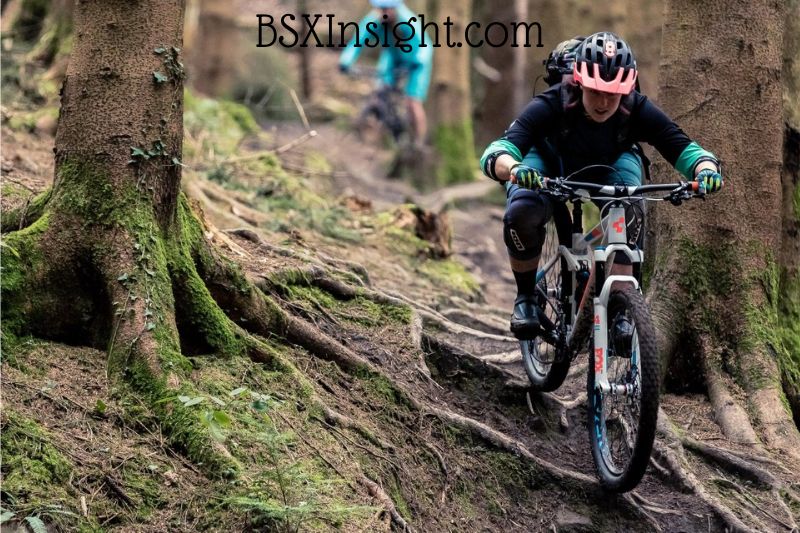
Mountain bikes can be ideal for you if you enjoy exploring dirt trails. They were constructed with endurance in mind and were first conceived in the early 1970s by people looking to escape their louder metropolitan environments.
They are built tough and heavy, and when combined with their sizable treaded tires and suspension systems, they let you travel any path in comfort. Due to their weight and suspension systems, they must highlight that they require much more work to ride, up to 51% more effort.
This statistic does not account for suspension, which would increase the figure by 100 to 150 percent for a distance of about the same 10 to 15 miles. Their ability to operate on various terrains is their main selling point.
Mountain bikes are available in a wide range of styles, just like road bikes, including Hardtail, XC – Full Suspension, Trail – Full Suspension, and Endura Full Suspension.
The nicest part of owning a mountain bike is enjoying the stunning surroundings while traveling through the trails. The smooth, albeit challenging ride is merely the cherry on top.
But be mindful of how often you must clean them and the danger of accidents that comes with off-road riding.
Pros
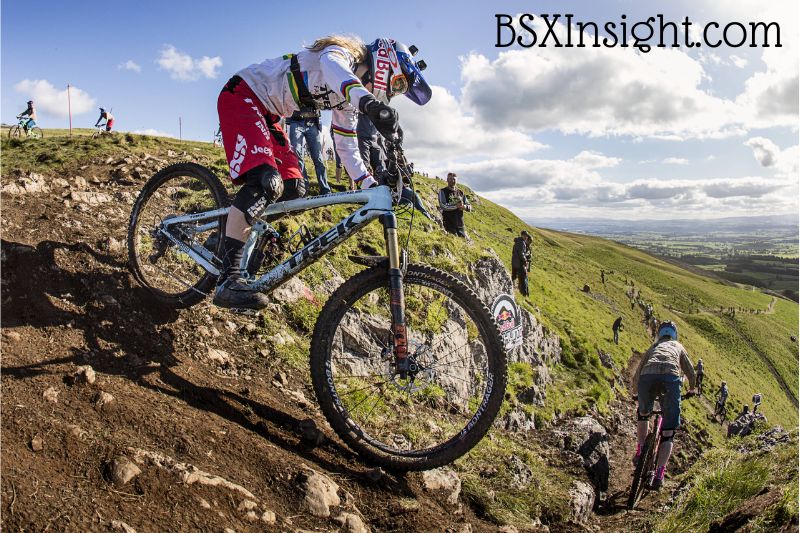
The Traction and Grip on Mountain Bikes Are Greater.
Compared to narrow road tires, mountain bikes have a wider contact patch with the ground thanks to their wide, knobby tires. Increasing the friction between the tire and the ground improves traction.
You can operate your tires with less air pressure to improve traction further. As opposed to 100 psi for road tires, the majority of mountain bike tires operate at roughly 30 psi. As a result, even more, the tread is in contact with the ground at the tire’s contact patch.
The suspension system improves traction by keeping the tires firmly planted on the ground as you travel across uneven terrain. When you encounter a bump, your tires won’t bounce off the road and lose traction.
You can accelerate, turn, and brake more forcefully, thanks to the added traction, without worrying as much about your tires blowing out. You can travel over sand and gravel thanks to a mountain bike. You can bike in wet or slick areas as well.
For instance, a mountain bike would be a better choice if you frequently ride in the rain. Steep slope riding is also possible with mountain bikes. It is less likely that the back tire will blow out.
You Can Ride to More Locations With A Mountain Bike.
You may travel on unpaved routes, dirt roads, single tracks, mountain trails, and more with a mountain bike. Even better, you can blaze your own path. Any surface, including dirt, gravel, roots, sand, snow, and boulders, may be handled by mountain bikes. With a mountain bike, you are not constrained to use paved roads or trails only.
This is made feasible by the suspension system, sturdy frame and wheels, and broad tires. You can ride in slick or loose conditions thanks to the knobby tires’ greater traction. Because of the sturdy frame and wheels, you may ride across rugged terrain without risking damage. The suspension system enhances control and handling.
Different mountain bikes have different capacities. For instance, 5″ tires are common on fat bikes. These evenly distribute your weight over a bigger surface. This prevents you from sinking when riding through soft terrain like thick sand, snow, or mud.
With their extensive suspension range, downhill mountain bikes let you ride over big jumps, dips, and bumps while moving quickly. You should pick a mountain bike that is made for the type of terrain you plan to ride.
Durable.

Road bikes often have weaker wheels than mountain bikes. They might have 32 spokes instead of 24, for instance. The additional spokes strengthen the wheel by more evenly spreading the load. Rims on mountain bikes are also broader. Road rims are typically 20mm wide, whereas most mountain bike rims are 30mm wide.
The rim’s additional thickness increases strength. Broken spokes, bent wheels, and fractured rims are less frequent because of the stronger wheels. You can ride over potholes, bumps, and off-curbs without worrying about wheel damage.
As a rule, mountain bike frames are a little bit thicker. Frequently stronger and thicker are the frame tubes. They are less likely to bend or crack due to a collision. Because clearances aren’t quite as tight as they are on road bikes, mountain bike groupsets are also a little more durable and heavy-duty.
Additionally, pinch flats are less common in high-volume tires. For the bike to endure the punishment of bouncing around on rough roads and trails, it needs to be more durable.
The greater durability of mountain bikes may be advantageous if you are a rough rider. Without being concerned about inflicting harm, you can ride up and down curbs and swiftly traverse streets paved with potholes.
The chances of the bike surviving a minor collision without being damaged may also be higher. A mountain bike can typically withstand a greater impact force than a road cycle without breaking.
Provide A Comfortable and Smooth Ride.
Low air pressure is used to power the large, high-volume tires. As a result, the tires become softer and are better able to absorb shocks and vibrations. The soft tire deforms around a rock or root instead of bouncing off when you run over one.
Suspension systems are also a common element of mountain bikes. Greater bumps and potholes may be absorbed thanks to this. The seat and handlebars provide a fair amount of stability while the suspension system dampens shocks. A rear suspension system can significantly improve ride comfort while traveling through extremely unforgiving terrain.
A mountain bike will feel less harsh than a road bike when you ride it on a bumpy trail or road. Those who ride on roads with cracks and potholes would appreciate this function. The smooth ride may be a welcome feature for someone with joint or back issues. Furthermore, the comfy ride is smoother.
Cost Less.
For whatever reason, road bikes of equivalent quality typically cost several hundred dollars more than mountain bikes. For between $800 and $1200, you can purchase a decent mid-range mountain bike. Options for beginners start at about $400. A mid-range road bike, by contrast, costs between $1000-$1500. Of course, there are both more affordable and more expensive options.
Additionally, replacement mountain bike parts are typically less expensive than road bike parts. For whatever reason, flat bar parts are typically less expensive than drop bar parts. You’ll save some money on replacement prices if you crash and shatter a shifter or brake lever. If money is tight, there are many inexpensive mountain bike parts available. A simple shifter or brake lever costs only a few bucks.
Buying used is a fantastic additional option to reduce costs. There are many inexpensive used mountain bikes available. People frequently buy them, don’t ride them, and then sell them after a few years. An excellent alternative is old mountain bikes.
For instance, I ride a touring version of a 1980s Schwinn High Sierra. I bought the bike and made a few tweaks for less than $150. I rode the bike for a few thousand kilometers and even went on my first trip with it.
More Comfortable Ride Position.
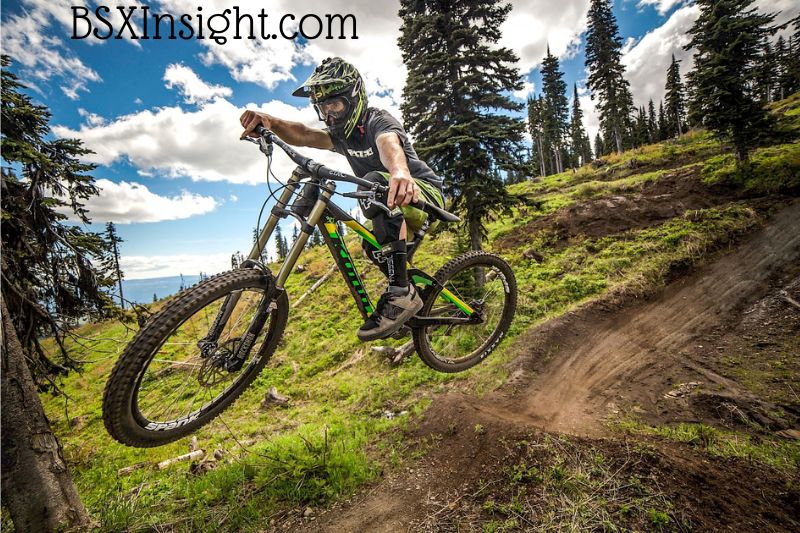
The geometry of a mountain bike’s frame places the rider in a more upright position. Compared to the aggressive ride position of road bikes, many riders find this to be more comfortable. This is due to a few factors.
First, your bottom bears the majority of your weight. The handlebars receive relatively little weight from you. Your hands, wrists, and shoulders will be less stressed as a result. As a result, while riding, your arms don’t become tired as quickly.
You can hold your head, neck, and back in a more neutral position when you’re standing up straight. In order to see ahead while riding, you don’t need to stoop down or crane your neck backward. This relieves pressure on your neck and back. You can clearly see the trail in front of you from this vantage point.
Additionally, this upright riding position improves respiration. Because you aren’t hunching over and compressing your abdomen, breathing through your diaphragm is easier. This is why mountain bikes are frequently more comfortable for riders with respiratory conditions.
In contrast, road bikes have the rider’s body inclined over the handlebars for a more aggressive riding stance. Some riders may feel uncomfortable as a result.
Mountain bikes offer greater flexibility.
A mountain bike can take you places that a road bike simply cannot. This enables you to ride the same bike for various cycling activities.
For instance, you could use your mountain bike for commuting during the week, ride some dirt trails with it on the weekend, go bikepacking while on vacation, and occasionally ride paved bike pathways with your family and friends. You may ride on and off paved surfaces using mountain bikes.
A road bike won’t really allow you to accomplish that. Because of their adaptability, mountain bikes are a wonderful option for people who can only afford one bike and who have limited storage space.
You can also put on thin road tires if you frequently ride your mountain bike on the road. While riding on flat paved terrain, these are far more effective. The majority of mountain bike rims are sufficiently narrow for 1″ wide tires.
Even two sets of rims are common among motorcyclists. One has broad mountain bike tires, while the other has thin road tires. They exchange them for the terrain they intend to bike. It resembles having two motorcycles in one in certain ways.
Are Simpler To Ride and Control.

In mountain bikes, the handlebars are flat. Compared to the drop bars that are generally included with road bikes, many novice riders find these to be simpler to use. Because flat bars are wider than drop bars, this is the cause.
You have more leverage, thanks to its additional width. The front wheel moves less when the handlebars are moved in a bigger motion. With flat bars, you can accurately maneuver the bike.
You can turn the handlebars a little bit quicker because of the added leverage. Your steering can be adjusted more easily. As a result, riding a mountain bike around obstacles, through congested areas, and at slow speeds is made simpler. The bike can be precisely directed in the direction you wish.
Due to the upright riding position of a mountain bike, you also put less body weight on the handlebars. The handlebars are now simpler to quickly turn as a result. These factors make mountain bikes more agile than road cycles.
With flat bars, the brake levers are also more convenient to reach because they are always close at hand. This enables you to brake more quickly and stop a little bit earlier. You occasionally need to change the location of your hands when braking when using drop bars. You have to spend some time on this.
The bike is also simpler to manage when riding over uneven terrain, thanks to the suspension system. While the frame, seat, and handlebars remain largely stable, the shocks deflect impacts. You are not being bounced around by the bike. This allows you to handle the bike even on uneven terrain easily.
Can Be Safer.
You’re more likely to sustain a small injury while riding a mountain bike but less likely to sustain a serious injury or pass away. There are several causes for this.
First, most riders go off-road, where there is no vehicular traffic. You’re less likely to be struck by an automobile and sustain catastrophic injuries as a result.
Due to the lack of bike lanes in crowded cities, a mountain bike is a fantastic option for those who reside there. You won’t have to worry about navigating crowded intersections or dodging reckless vehicles. You can take a horse out for a ride in the woods far from these hazards.
A mountain bike crash frequently results in less severe injuries as well. The majority of mountain bikers travel on dirt trails with vegetation on the sides, which is the cause.
Pavement is a harder surface to land on than dirt and grass. Minor wounds like scrapes and scratches could be a little more frequent. As you ride by, tree branches and brush may irritate your arms and legs. You could sustain some minor injuries if you crash your bike while riding a route. Less likely are severe wounds.
Due to their weight and lower gearing, mountain bikes are slower than road bikes. For instance, whereas most road cyclists travel at speeds considerably over 30 mph, the majority of mountain bikers typically travel at less than 10 mph.
Because you weren’t traveling as quickly when you crashed, your injuries might not be as bad. In addition, you won’t land on harsh pavement but on softer dirt or plants.
Your tires are less likely to slide out unexpectedly from under you when riding on the road, thanks to the wide tires’ increased traction. For instance, you will probably remain upright if you hit a piece of gravel.
Because you don’t need to move your hands to brake, the brake lever location also makes emergency stops a little bit quicker. This shortens the distance you must stop.
You can also see the road or trail in front of you clearly from the upright riding position. These factors may make riding a mountain bike slightly less likely to result in a collision.
Mountain riding isn’t always safer, of course. Downhill motorcyclists make large leaps as they ride quickly. Broken bones or other catastrophic injuries could readily occur in a crash.
Healthier than road cycling

Cycling is healthy for you in every way. Road cycling is marginally superior to mountain biking. This is due to three key factors. Mountain riding can firstly increase bone density.
This is made possible by the continuous bumps and vibrations you encounter while cycling through rough terrain. These shocks strengthen your bones. You’ll be less likely to break a bone if you fall. It’s crucial to have healthy bones for general well-being.
Because you must manage the bike while riding on uneven terrain, mountain biking can also aid in muscle toning. To ride a mountain bike on a difficult mountain trail, you really need to know how to maneuver it. You may strengthen your upper body by doing this.
Additionally, you’ll cycle your mountain bike at a variety of cadences, from fast bursts of energy to steady riding. This encourages the use of various muscle groups while toning your legs.
Additionally, mountain bikers typically breathe in fewer pollutants compared to road cyclists. Because mountain bikers travel off-road where there are fewer cars, this is the situation. While cycling through the woods, you are not breathing in pollution from cars and other sources. This improves the health benefits of mountain biking a little.
You learn more technical skills when you ride a bike.
You can learn some crucial abilities from riding a mountain bike that you can’t as readily learn from riding a road bike. You may become a more adept cyclist overall as a result, both on and off the road.
For instance, you develop better bike handling skills while mountain biking. You get knowledge on how to pick a line and recover when you lose traction. Additionally, you’ll learn how to balance the bike on unsteady ground. This will enable you to navigate numerous barriers with ease. Because you continuously have to face new challenges while mountain riding, you pick up these abilities quickly.
Mountain riding will also help you improve your pedaling technique. You’ll learn how to pedal smoothly, sprint strongly, vary your pedaling force, and coast over obstacles while riding different terrain.
Due to the constant presence of new obstacles to ride over or avoid, mountain biking can also improve your reflexes. Mountain biking allows for greater risk-taking. Low-speed crashes in the dirt are less likely to result in injuries. As a result, you can practice new abilities without worrying about getting hurt.
These abilities are all directly applicable to road cycling. In fact, because these skills are a little more difficult to develop on a road bike, some road cyclists employ off-road riding for training during the off-season.
Improved component availability.
In the entire world, mountain bikes are likely the most popular type of bicycle. You can nearly always locate a spare tire, rim, brake lever, shifter, cable, etc., wherever you are. Especially if you have an 8-gear drivetrain on a simple bike with 26″ tires. Mountain bike components are available at many department stores and small bike shops. It can be more difficult to find parts for road bikes.
Of course, finding mountain bike parts isn’t always simple. In some regions of the world, it can be difficult to find contemporary parts like hydraulic disc brakes, 29er wheels and tires, and 1X drivetrain components. To select a bike with contemporary components, you should consider parts availability.
Parts availability doesn’t really matter if you ride in a developed country or a big city because you can always order what you need online or go to a high-end bike shop. When choosing a bike, people who ride in developing nations or remote areas might want to think about parts availability. In general, mountain bike parts are more readily available than road cycle parts.
Low air pressure can be used for mountain bike tires.
The usual pressure range for mountain bike tires is 22–35 psi. Road bike tires are operated at 80–130 psi for comparison. Wider tires have a higher volume, making it possible to run the tires at low pressure. The tires are less prone to bottom out and strike the rim as a result.
Running your tires at lower pressure has two key advantages. First, the softer tires absorb shocks and vibrations, so the ride is smoother. Instead of bouncing off of impediments like rocks and roots, the huge tires may deform around them.
Softer tires also provide better traction. More tread contacts the ground thanks to the soft tires’ contact patch deformation. As a result, there is more resistance between the tires and the ground.
You can let some air out of your tires to improve traction or make the ride more comfortable if you’re riding on a very unforgiving or slick surface. Due to the high volume tires’ longer travel distance between the tire and rim, pinch flats are also less of a concern. They are less prone to reach a low point.
It can be used on roads.
You are welcome to ride your mountain bike on paved surfaces. Although it may not be quick or efficient, it can easily navigate the terrain. You cannot ride a road bike on mountain bike trails, and vice versa.
Looks
Mountain bikes have an uncompromising, ready-to-ride appearance. The aesthetics of mountain bikes are popular among cyclists. Of course, appearances are relative.
Cons
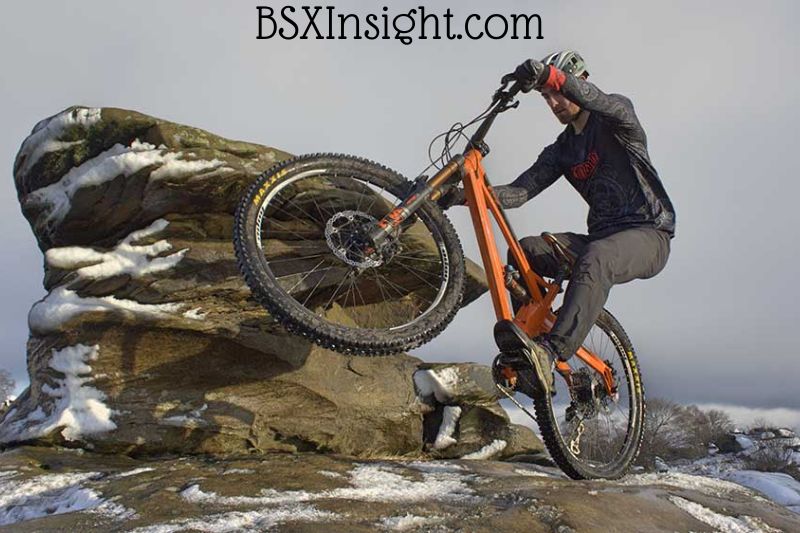
Heavier
Mountain bikes often weigh 28 to 32 pounds (12.7-14.5 kg). Comparatively, road bikes weigh between 18 and 25 pounds (8-11 kg). A mountain bike typically weighs 10–12 pounds (4.5–5.5 kg) more than an equivalent road cycle.
Due to the wider tires, suspension system, and stronger frame and wheels, mountain bikes are heavier. Each of these has additional material, which increases mass. Mountain bikes are a little bit slower and less effective when they are heavier. Especially when ascending slopes. The added weight requires more energy to move about.
Mountain bikes are more difficult to carry due to their additional weight. A big mountain bike will make it more challenging to transport your bike up a flight of stairs or load it onto a roof rack, for instance. You could have to pay more for overweight luggage if you fly with your bike.
There is only one hand position.
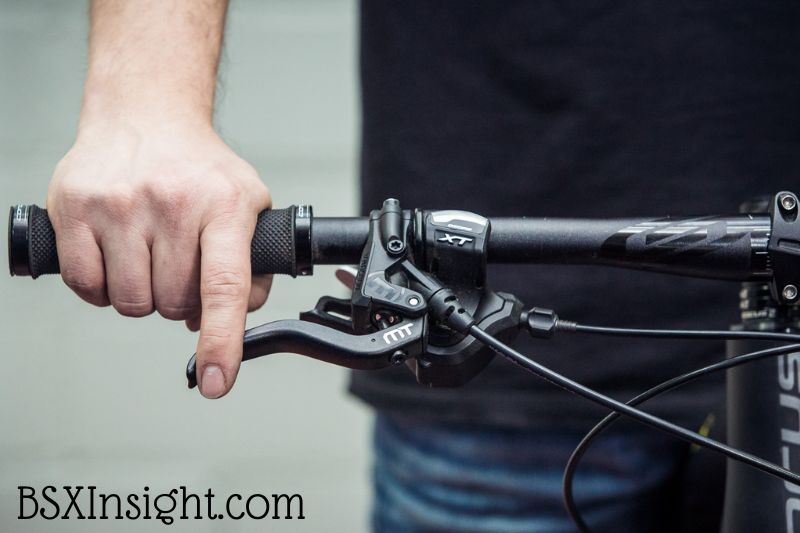
Most mountain bikes have flat, standard handlebars that only have one place to grasp. The issue with this is that putting your hands in the same position for an extended period of time might cause wrist pain or hand numbness. Your wrist nerves are being compressed, which is the source of this.
In severe circumstances, holding your handlebars in the same position for days on end can really harm your nerves permanently. Bikepackers occasionally encounter this.
Fortunately, there are a few answers. Start by picking out comfortable grips. A lot of mountain riders want solid grips. Alternatively, you could install handlebars with multiple hand positions. Installing bar ends on your flat existing bars is an additional choice. They create a second-hand position. Gloves can help prevent numbness and soreness as well.
You should pay great attention to your hands when cycling. Take a pause if they start to feel numb. Permanent hand numbness is possible. Check out this informative article for more details.
Less efficient
There are several causes for this. First off, mountain bikes require more effort to accelerate and sustain speed due to their weight. Moving greater mass around requires more energy.
Mountain bike tires that are soft and wide bend at the contact patch. When compared to hard, thin road tires, they make more contact with the ground. This adds more friction, which requires energy on your part to overcome. In other words, the rolling resistance of mountain bike tires is high.
Additionally, the upright riding position increases air resistance, which might slow you down. Additionally, broad tires provide more air resistance compared to narrow road tires. To overcome this extra air resistance, more effort is required. Especially when moving quickly.
Additionally, the compression and rebounding of the suspension system while you pedal can waste energy. Your weight changes as you pedal, causing the suspension to compress unduly. Compressing the suspension wastes energy that could have been used to advance. Pedal bob is the name of this occurrence.
Road bikes are better at maintaining speed than mountain bikes. Due to the additional rolling resistance and drag, you’ll slow down more quickly when you stop pedaling. You’ll use more energy riding a mountain bike and cover less ground than you would on a road cycle. These factors make mountain bikes unsuitable for long-distance travel unless you intend to do the majority of your off-road riding.
Need to be serviced more frequently.
If you ride in muddy, dusty, or unclean circumstances, one disadvantage of using a mountain bike is that you’ll need to clean it practically every time you ride. This entails cleaning and lubricating the chain as well as the frame, wheels, and suspension parts. It takes time to do this.
This cleaning is required to stop contaminants like dirt and sand from getting into the drivetrain and suspension components, which could lead to wear and tear. Your mountain bike’s drivetrain and suspension parts may become clogged with junk and cease to function correctly if you don’t routinely clean them.
Suspension parts on mountain bikes also need routine maintenance. Rear shocks and fork suspension both require maintenance roughly every 6 to 18 months, depending on how frequently you ride and the kind of suspension on your bike.
Your suspension system’s seals and oil need to be cleaned or replaced as part of suspension maintenance. You will need to have the suspension fork and rear shock repaired every couple of years. Road bikes have robust frames, so you don’t need to worry about this.
Require a larger gap to pass-through.

The handlebars on most bikes are their widest component. The flat bars on mountain bikes are typically 200 mm broader than the drop bars used on the majority of road bikes. The additional breadth makes it more difficult to fit through small gaps.
If you commute through heavy traffic, in a big city, or on curvy paths, this could be a problem. Installing additional, narrower handlebars or cutting a few inches off of each side of your current handlebars are two solutions. The additional width is usually not a problem for riders.
Slower than road bikes
This is due to four key factors. Mountain bikes are heavier to start with. Your speed is slowed by the increased weight. Additionally, the wide, soft tires add to rolling resistance. This makes you move more slowly.
Additionally, riding a mountain bike puts you in a less aerodynamic position. This increases drag and slow you down even further. Finally, the distance between gear ratios is wider on mountain bikes. This disrupts your shifting cadence. It takes longer to get back to your ideal cadence. This makes you move more slowly.
Riding a mountain bike will result in a slower average speed and slower acceleration. You’ll have to spend more time in the saddle to travel the same distance as on a road bike. You might find it challenging to keep up with your pals if they all ride road bikes while you ride a mountain bike.
Not be as widely available.
Today, the majority of people reside in cities. There are probably no mountain biking routes in the area where you live. The mountain bike paths outside of your city are probably not accessible by bicycle from your house. You might need to pack your bike into your car and travel in order to reach the trails. This could be annoying. As a result, you might cycle less frequently.
Road Bike Vs Mountain Bike Parts: Which One You Should Choose?

Purpose
All types of riding on paved surfaces are intended for road bikes. That includes highways, bike lanes, mountain passes, and more in addition to city streets. These bikes are lightweight and aerodynamic, built to go quickly both flat-out and uphill.
You’ll never want to take your road bike off-road because of its frame geometry, components, and handlebar form, which all contribute to its ability to be quick.
Mountain bikes are practically the exact opposite of road bikes in that they are made for off-road riding. Mountain bikes are ideal for keeping you upright on rocky, muddy singletrack trails, but their thick tires and treads make them exceedingly slow on the pavement as if the weighty frame wasn’t slowing you down enough.
Mountain bikes’ flat handlebars and suspension systems are designed to enhance handling and comfort off-road, particularly on challenging singletrack. Along with strong disc brakes and wide gear ranges for all kinds of off-road terrain, a mountain bike’s frame geometry is created to assist absorb hits and aid balance through bumpy areas.
Frame Structure
Compared to mountain bikes, which are made to be stable on uneven terrain, the best road bikes are built to be small and aerodynamic, starting with the frame itself. Compared to a mountain bike, a road bike will typically have a longer reach and top tube, which allows the rider to spread out and adopt an aerodynamic position.
Fork offset, sometimes referred to as fork rake, is the difference between a straight line through the steerer tube of the fork and a vertical line through the front hub. A mountain bike will typically have a wider fork rake and a slacker head tube angle, which keeps the rider’s center of gravity balanced on steep descents.
Road bikes have a short rake, which results in a steep fork and quick handling. On a mountain bike, this feature essentially moves the front wheel farther forward of the frame, increasing leverage and control.
In comparison to road bikes, mountain bikes have a shorter reach and top tube, which keeps the handlebars closer to the rider for better handling. This also generates a more upright position on a mountain bike, which is less aerodynamic but better for handling in off-road situations and keeping your center of gravity low.
The difference between the tire contact point and the steering axis is determined by trail, a challenging measurement that combines the head tube angle and fork rake.
Simply put, a road bike often has a steep head tube and a wider fork offset to reduce trail and improve handling. Larger trails on endurance mountain bikes often increase stability and improve high-speed handling over challenging terrain.
Gearing and Brakes
Nowadays, most mountain bikes have a 1x setup, which only has one front chainring. This lessens the possibility of the chain breaking off and does away with the necessity for a bulky, pricey, and fussy front derailleur.
Mountain bikes require a huge back cassette with a broad gearing range due to the single front chainring and the incredibly steep terrain they must traverse. Due to their enormous size, which may occasionally extend all the way to a 50t rear cog, some cassettes have acquired the moniker “dinner plate.”
Since manufacturers are now producing 11-speed and 12-speed mountain bike cassettes with cog sizes ranging from 10 to 50 and larger, you can get a wide variety of gearing for challenging singletrack climbs and rapid descents, even with a 1x setup.
Regarding road bike gearing, there are many more possibilities, including compact and race-ready setups. The majority of road bikes have two front chainrings and a front derailleur, and the traditional setups are 53/39, 52/36, or 50/34.
Although many cyclists choose even larger alternatives to help them climb steep hills, most road cassettes are 11-speed with a range of 11 to 28-tooth sprockets.
A common chainring setup for road riders, particularly recreational ones, uses smaller front chainrings and larger rear cogs. This restricts you at the top (at high speeds), but it enables you to continue pedaling at a natural cadence on extremely steep ascents. You might still be pedaling at 80 rpm up a 9% hill with a tiny chainring arrangement.
For mountain bikes, disc brakes are the only option when considering brakes. Disc brakes are the finest for off-road riding since they are robust, strong, and highly effective in the rain.
Read also about How To Adjust Bike Brakes: A Step By Step Guide.
Additionally, disc brakes provide extra tire clearance, which is ideal for mountain bikes with wide, knobby tires. Riders employ larger-than-normal disc brakes for downhill and extreme mountain biking, which helps to boost stopping power, performance, and high speeds.
After years of using rim brakes, most road bike manufacturers have begun incorporating disc brakes into all of their road models after realizing the advantages of disc brakes.
Although there was initial skepticism due to concerns over safety, aerodynamics, and weight, disc brakes have become a standard feature on road bikes thanks to technological advancements.
Rim brakes, which are still used on some road bikes and are often lighter than disc brakes but don’t work as well in the rain, are still available. Rim brakes also lack modulation and have lower overall power. Rim brakes are popular among riders due to their price and ease.
Rim brake bikes are much simpler to put up and maintain than disc brake bikes, making them the preferred choice for most bike technology (trainers, vehicle racks, and bike stands).
Wheels and Tyres
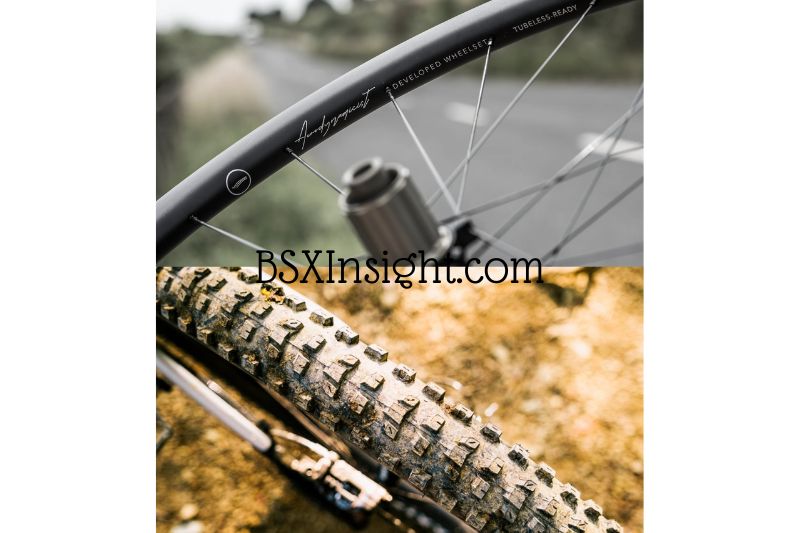
Road bike tires are narrower and smaller than those on mountain bikes, making mountain bikes stronger and more resilient on difficult terrain.
Mountain bike wheels and tires are strong and grippy over uneven terrain because they are engineered to handle rocks, roots, and ruts. Their tires are also puncture-resistant, featuring thick tread patterns and puncture-protected sidewalls.
For a particular style of mountain biking, mountain bikes have thick, chunky tread patterns. Race tires and large mud tires are very dissimilar, and downhill tires and cross-country mountain biking tires are also dissimilar.
In terms of tread patterns, those variations don’t actually exist in road tires. Road tires typically have very little tread and except for shallow grooves surrounding the tire.
The greatest road bike tires are much narrower than mountain bike tires, and they’re sized in millimeters (mm) rather than inches (in), which are the measurements mountain bike tires make. Road tires range in width from 21mm to 38mm, but even at that size, they are still far thinner than the tiniest mountain bike tires, which start at about two inches.
The tire pressures of on-road bike tires, which are typically between 50 and 100 psi, are also much higher. Because mountain bike tires are bigger, they may operate at lower pressures (20-35 psi), which improves performance on rough and wet terrain.
Suspension
One of the most distinctive features of a mountain bike is suspension, which is uncommon on a road cycle. Hardtail and full-suspension are two types of mountain bikes distinguished by their suspension setups.
The only suspension on hardtail mountain bikes is the front, which is often in the fork. These systems are stiffer than full-suspension mountain bikes and typically feature 100–170mm of travel. Hardtail mountain bikes are perfect for cross-country and short-track mountain bike racing since they are substantially lighter than full-suspension bikes.
Mountain bikes with full suspension have both front and rear suspension, which enhances overall comfort and control over difficult terrain.
Compared to hardtail mountain bikes, these bikes are substantially heavier and more expensive, but they offer much greater trail performance. Full-suspension mountain bikes are perfect for all types of trail riding, downhill mountain biking, and racing because they can have 100–200mm of travel.
Handlebars
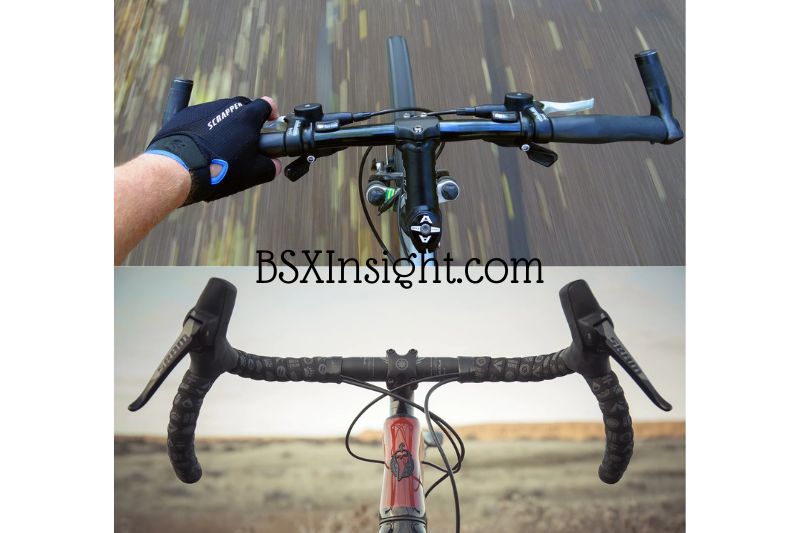
The handlebars are one of the main distinctions between a road bike and a mountain bike. Drop bars, which are curved sets of handlebars on road bikes, allow for three alternative riding hand positions: hoods, drops, and tops.
The most typical hand position for road riding is on the hoods, where the brake and shift levers are positioned. The tops are utilized for casual riding and climbing, while the drops are used for sprinting, racing, and descending.
Mountain bikes have flat handlebars that cross the front of the bike from left to right. With flat mountain bike handlebars, there is only one riding posture, and that is with your hands on either side of the flat bar. Due to their placement at the end of each side of the bar, the shift and brake levers are simple to access with just a finger or thumb.
Because flat bars are wider than drop bars, they provide better leverage and handling in tight corners. Flat bars are significantly superior to drop bars for steep and constricting single-track turns.
Riding position
There are significant distinctions between the positions used for road and mountain biking. You will be stretched out while riding a road bike, with a closed hip angle and a forward-leaning posture. You will be sitting in a much more upright position while riding a mountain bike because of the short reach, slacker head tube angle, and flat handlebars.
You won’t have to worry as much about aerodynamics when riding a slower mountain bike because of the wide tires and suspension, which will keep you more comfortable on rocky terrain.
Road bikes for long-distance riding have a more relaxed form that is less aerodynamic but more comfortable. These bikes are made for all-day excursions using a more upright position to protect your back and your arms. They also have many of the same road bike features that make them quick and enjoyable.
Speed Variation

When you consider the steep inclines, rising and descending in any given mountain path or route, it is noted that the fluctuation in speed is much higher with mountain bikes.
Additionally, it is important to note that different types of terrain produce varying speeds, such as grass versus gravel.
Understanding the various elements that affect your bike’s acceleration and speed can help you make an educated choice when buying one.
This movie by the Global Cycling Network (GCN) compares the speeds and challenges one can encounter on a trail or a road trip, even though it is not thorough research.
Compared to the road bike rider, whose average speed was roughly 24.80 km/h, the mountain bike rider’s average speed was 8.18 km/h, which is significantly slower.
This demonstrates that your mileage may vary based on the routes you select, which is ultimately more significant than the top speed of your bike model.
It should be noted that your speeds can be significantly higher because of the momentum created during mountain track descents.
We can watch the Global Cycling Network’s follow-up video for more context (GCN). We learn about the top speeds they get during their race when tested on several routes with various terrains.
When given a good off-road route, the mountain bike reached a top speed of 56 km/h.
The Road Bike accelerated to 66.00 km/h, which is a significantly higher speed.
It requires somewhat more work and a higher maximum power wattage to achieve somewhat comparable speeds.
The mountain bike and road bike communities couldn’t be more dissimilar. The former is calm and more likely to travel with friends, while the latter is speed-focused and engages in vigorous aerobic exercises.
Road and mountain bikes are equally hospitable and competitive.
No matter which bike you choose, you are still assisting in removing hazardous CO2 waste from the environment, which other vehicles’ exhausts emit when they are on the road.
Let’s examine the two most popular bike categories that you can purchase.
Read about another comparison post: What is a gravel bike?
Things to Consider When Choosing Between a Mountain Bike and Road Bike

Prior to making a decision about a certain model of bike, you should give the intended purpose of the bike some thought. You might discover that one kind of bike fits your riding style better than the other. When deciding between a mountain bike and a road bike, you need to take into account a few key factors, such as:
Where do you intend to bike? Consider the terrain you intend to ride on. You need a bike that is more off-road oriented, like a mountain bike, if you intend to spend most of your time exploring trails or gravel roads. You’ll be better off with a road bike if you just ride on paved roads. Consider a more adaptable bike, such as a hybrid, gravel, cyclocross, or adventure bike, if you want to ride both on and off-road.
Whom you’re riding with? If you’re going to be riding with a group of pals, you might want to pick a bike that matches their style. You can all ride together in this manner. You probably won’t be able to keep up with your buddies if you choose a mountain bike, but they ride a road cycle. You might not be able to ride with your pals at all if you choose a road bike when they are all riding mountain bikes. Solo riders don’t need to be concerned about this.
The routes you intend to take. The further you intend to ride, the more important efficiency, aerodynamics, and weight are. With a lightweight, aerodynamic road bike, you’ll likely be better off if you have a daily commute of 20 miles through the city. Any bike will work if you only intend to travel a few kilometers along a bike lane.
The riding environment. If you live in a snowy or rainy area, you may want to buy a bike with broader tire clearance. If the roads are slick, you might require more traction. In the winter, you might even wish to install studded tires. In this situation, you’ll need a bike with at least 45mm of tire clearance.
Road conditions. Consider the state of the roads in your city or nation. Even if you want to spend the majority of your time riding on a road, it may be preferable to use a mountain bike if the road is in bad condition with lots of potholes, cracks, and debris. Riding a road bike might make you happier if the roads are all surfaced recently and are smooth.
Individual preference. Consider your previous bicycles and the features you loved and disliked about them. Which do you prefer, flat or drop bars? You might want to ride a flat bar road bike, mountain bike, or hybrid if drop bars are not your thing.
Do you favor a more upright or a more forceful and aerodynamic riding position? Riding a mountain bike can be more comfortable for you if you like a more upright stance. Which do you value more: traction, comfort, efficiency, or speed? Making sacrifices is a necessary part of selecting a bike. Think about your preferences.
Your financial situation. If you have a limited budget, a mountain bike might provide you with the best value. Observe the used bike market as well. Older bicycles can be very affordable. Naturally, inexpensive road bikes are also readily accessible.
Are you aiming to get fitter or reduce weight, and if so, why do you ride? The best option might be a road bike. Do you use a vehicle for transportation? It could be better to ride a hybrid or commuter bike. Perhaps you’re just cycling for fun with family and friends. In this situation, you are free to ride the bike of your choice.
Accessories you wish to use. If you plan to use your bike for touring and mount racks and panniers, make sure you select a bike with the appropriate braze-on. Perhaps you need to carry a lot of water because you live in a hot climate. You should pick a bicycle with many bottle cage mounts. Perhaps you enjoy adding a cycle computer, lights, a bell, and a GPS to your handlebars. You should pick a bike with enough room for all of these extras.
FAQs
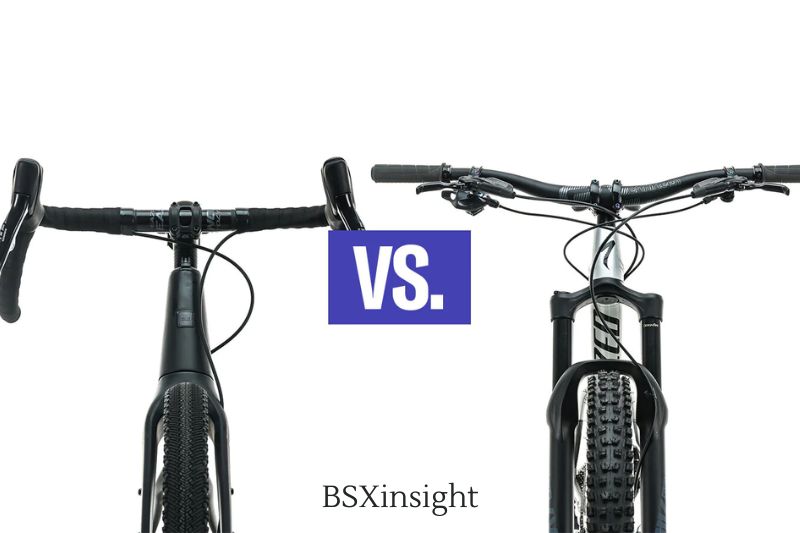
What is harder, mountain biking or road biking?
Road bikes are a bit more difficult to ride than mountain bikes. This is the case because the narrow handlebars and aggressive ride position make it a bit harder to control the bike. Because road bikes have less traction, you can’t as easily ride slippery surfaces.
Can you use a mountain bike as a road bike?
Those who can only afford one bike are often better off with a mountain bike as well due to the added versatility. You can ride a mountain bike on the road, but you can’t ride a road bike off-road. This allows you to use the same bike for commuting, touring, running errands, and mountain biking.
Why are mountain bikes better than road bikes?
Mountain Biking is better than Road Biking because it is always an adventure. Whether you’re knocking out 20 miles in Moab or running your 100th time at your local track, there is always a new experience out on the trail.
Conclusion
There are a few key differences between road bikes and mountain bikes. Road bikes tend to be lighter and more aerodynamic, while mountain bikes are sturdier and have wider tires for better traction. Mountain bikes also have suspensions to absorb bumps from riding on rough terrain, while road bikes do not.
Ultimately, it comes down to what you’ll be using the bike for – if you’re mostly riding on paved roads, a road bike is a better choice. But if you’re planning on doing any off-roading, a mountain bike is the way to go.
Last update on 2024-04-17 / Affiliate links / Images from Amazon Product Advertising API

